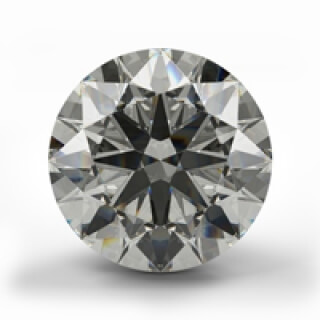Diamond Terminology Explained
 If you are considering purchasing a diamond, particularly a sizable one, it is useful prior to meeting your jeweller to grasp a basic knowledge of the terminology used to describe the various aspects of a diamond.
If you are considering purchasing a diamond, particularly a sizable one, it is useful prior to meeting your jeweller to grasp a basic knowledge of the terminology used to describe the various aspects of a diamond.
This will make you feel more at ease and will ensure that you find exactly what you are looking for. The most important elements to consider are the ‘4 Cs’; carat, clarity, cut and colour.
Below is a glossary of useful terms to consider when buying diamonds.
Carat: This refers to the weight of a diamond (1carat = 200mg). Generally speaking, the heavier the diamond, the more valuable it is (though the colour and clarity can affect this considerably also). A piece of jewellery will always state the total carat weight, so if for example an item of jewellery contains a cluster of diamonds, the combined diamond carat weight will be calculated, as opposed to the individual weights.
Colour: Diamonds are colour-graded using a scale which spans from D (colourless), which is the most desirable and rare, to Z (light yellow), which is the least desirable. The colour variations are quite subtle and virtually impossible to spot by the untrained eye from one grade to the next. However, the colour of a diamond has considerable influence on its value.
Saturation: This refers to the intensity of the colour of a diamond.
Clarity: This is used to describe how clear a diamond is, with regards to any blemishes and natural inclusions the stone may have. The scale which determines the clarity of a diamond ranges from FL (flawless) through to IF (internally flawless), then VVS1-2 (very very slight inclusions), VS1-2 (very slight inclusions), SI1-2 (slight inclusions) then I1-3 (inclusions); the diamond is assessed at 10x magnification when determining the colour and clarity grades.
Cut: Although usually associated with the shape of a diamond (round brilliant, pear, emerald etc), the cut of a diamond actually refers to the way in which it interacts with the light, (i.e. how the stone is physically cut, polished and finished). The scale used to measure this ranges from Excellent to Poor. The quality of the cut and finish influences the value of the diamond in question.
Pavilion: The area of the diamond which, most commonly, faces downwards. The cut of this area determines a diamond’s Brilliance.
Culet: The point the Pavilion comes to.
Girdle: The outermost edge, where the Crown meets the Pavilion. This is the area which is most likely to be clasped into a setting.
Table: The largest flat area of the diamond which faces upwards when the ring has been mounted. This acts as the main entrance point for light.
Crown: The distance between the Girdle and the Table.
Brilliance: The way in which light is reflected off the internal surfaces of a diamond.
Dispersion: This refers to how white light is refracted off the surfaces of the diamond and split into the colours of the rainbow. This is also sometimes often described as the fire of a diamond.
Scintillation: This indicates the sparkling quality of a diamond as it moves. This is affected by the symmetry of the diamond, as a result of the quality of the cut.
Brightness: This describes how well white light is reflected off both internal and external surfaces of a diamond.
Crown Angle: This is the angle between the Table and the Girdle; this influences the Brilliance and Dispersion of a diamond.
The knowledgeable team at Cuttings Jewellers have the expertise to advise you if you are looking to purchase or value a diamond.




